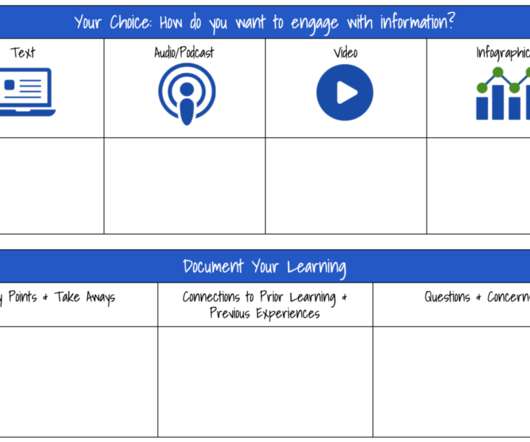Navigating Your Journey to Remote Learning
A Principal's Reflections
MARCH 18, 2020
Social distancing has quickly become the thing to do and will soon be the cultural norm. In the case of districts and schools that have limited digital resources, it defeats the purpose of assigning lessons and work if kids don’t know how they did upon their return. You really can’t go wrong here.












Let's personalize your content